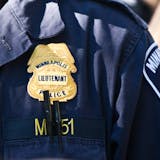Twice a year, Lorri Talberg buys 25 garments to update her work wardrobe for her job in corporate communications at Ameriprise Financial.
Even as prices rise for gas and groceries, she recently purchased those 25 pieces for around $250. She shops at thrift and consignment shops, even using a free personal shopper at Arc's Value Village to streamline the process so she doesn't have to hunt through racks of clothes.
"I like to be up on the current fashion and this allows me to do it and be sustainable," Talberg said.
After two years of yoga pants and shirts designated for Zoom meetings, dressing for work is back as more workers are called into offices.
We asked a pair of Twin Cities shopping experts — Sara Rogers, a Mall of America trend specialist, and, Sarah Colvin, a personal shopper for Arc's Value Village — for some tips about rebuilding your work wardrobe at a moment when inflation is hitting household budgets hard. Here's what they said:
Shop your closet
Many of us have a closet of clothes that have hardly been worn since the pandemic began. Take inventory of what you have. Make sure clothes fit, are clean, pressed and have no tears or frays. Polish shoes. Think about the different pairings you can create.
But don't feel pressured to clean out your closet even if you've gained weight or have been binge-watching "Tidying Up With Marie Kondo" and have taken her motto, "Keep only what sparks joy," to heart.


